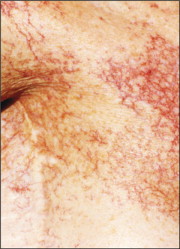Source: The Lancet Oncology
Author: Julie B Schnur
Quality of life is broadly recognized within oncology as an essential component of cancer care and has been studied extensively in patients with breast cancer.1 Yet, among the three pillars of breast cancer treatment (surgery, chemotherapy, and radiotherapy), research on radiotherapy-related quality of life has lagged behind. Specifically, the study of quality of life as it relates to normal tissue effects in patients with breast cancer is woefully understudied. The reasons for this relative lack of attention are unclear, but the results are worrying. Insufficient understanding of the effects of radiotherapy on quality of life can impair doctor—patient communication, inhibit therapeutic progress, and limit a patient’s understanding of radiotherapy and its outcomes. Therefore, the report of the START trials today in The Lancet Oncology, by Hopwood and colleagues, is much needed. 2 It makes an important contribution to the area of radiotherapy by looking at several aspects of quality of life (breast, arm, and shoulder effects, and body image). In doing so, these researchers show a consideration of the patient’s point of view that is too often absent.
The study’s findings provide a strong foundation for further pursuit of understanding of the patient’s experience of adverse skin changes after radiotherapy. Indeed, at least five areas of future research are readily apparent. 40% of women reported moderate or striking concerns for at least one body image item up to 5 years after treatment, and body image concerns did not differ between radiotherapy regimens. This combination of results suggests the first two directions for future research: scale development and interventions. First, with regard to scale development, the body image scale used in the study was designed to measure overall body image, rather than breast satisfaction per se. Therefore, development of a scale specifically to assess breast body image is needed to understand better the clinical effects. Second, with respect to interventions, the finding that body image scores did not differ between radiotherapy regimens suggests that, at this time, a purely medical intervention strategy (e.g., variation of radiotherapy regimens) might not be sufficient to improve body image. A more comprehensive approach might be needed. For example, in broader scientific published work, behavioral medicine approaches (e.g., cognitive behavioral therapy) have been shown to be effective for enhancement of body image.3 Third, the researchers do a very nice job of following up patients for 5 years after radiotherapy. However, the acute treatment period is not examined. This time presents unique challenges to women, including impositions on their schedules and steadily increasing physical discomfort and changes in breast appearance. Fourth, no information was presented about the ethnic origin of the population. Such information is vital because it indicates the generalisability of study findings. Can the present data be generalized to diverse samples? Is ethnic origin a moderator of treatment effects on quality of life? Finally, reported subgroup analyses (moderators) are restricted to medical variables (primary surgery and boost). Yet, in related work,4, 5 psychological factors (e.g., investment in appearance) are also indicated as potential moderators of body image. Future research should expand the study of moderators to include psychological predictors recognized in other studies.
In conclusion, the report by Hopwood and colleagues is an important and exciting addition to the study of radiotherapy effects in patients with breast cancer. Hopefully, the work by this group will inspire both researchers and clinicians to make understanding and assessment of patients’ experiences a top priority.

Photo credit, Dr Zara/Science Photo Library
The author declared no conflicts of interest.
References
1 Lipscomb J, Gotay CC, Snyder C. Outcomes assessment in cancer: measures, methods and applications. Cambridge: Cambridge University Press, 2005.
2 Hopwood P, Haviland JS, Sumo G, et alon behalf of the START Trial Management Group. Comparison of patient-reported breast, arm, and shoulder symptoms and body image after radiotherapy for early breast cancer: 5-year follow-up in the randomised Standardization of Breast Radiotherapy (START) Trials. Lancet Oncol 201010.1016/S1470-2045(09)70382-1. published online Feb 8. PubMed
3 Jarry JL, Ip K. The effectiveness of stand-alone cognitive-behavioural therapy for body image: a meta-analysis. Body Image 2005; 2: 317-331. PubMed
4 White CA. Body image dimensions and cancer: a heuristic cognitive behavioral model. Psycho oncology 2000; 9: 183-192. CrossRef | PubMed
5 Lawrence JW, Fauerbach JA, Thombs BD. A test of the moderating role of importance of appearance in the relationship between perceived scar severity and body-esteem among adult burn survivors. Body Image 2006; 3: 101-111. PubMed
a Mount Sinai School of Medicine, New York, NY, USA

Leave A Comment
You must be logged in to post a comment.